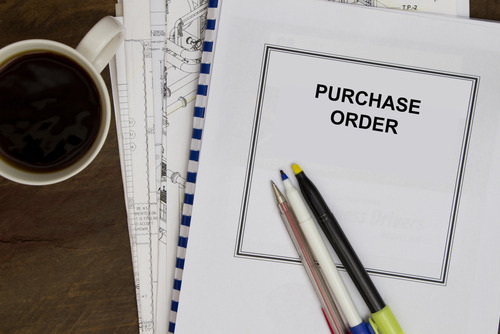Independent research commissioned by Exact last year found that Britain’s SMEs are collectively losing out to the tune of £3.7 billion as a result of poor internal financial processes. This is a shocking number and one that clearly shows many small businesses don’t have a proper handle on their finances. Purchase orders are one of the most critical aspects of these internal financial processes. Despite this, they are often misunderstood and poorly handled, leading to commercial losses, project delays and frustration on the part of buyer and seller.
But what exactly is a purchase order? Often simply referred to as a PO, a purchase order is a document sent from a buyer to a supplier with a request for goods or services. The PO will usually contain the particulars of the order – so for, example ten tonnes of cement or five hours of consultancy time. It is a formal document that acts as a contract between buyer and supplier; once issued the buyer has committed to purchasing the goods or services and the seller commits to fulfilling the order.
Using purchase orders, rather than simply relying on informal processes like email or telephone, formalises the exchange and helps both parties manage and keep track of their finances much more easily. They help your finance department or bookkeeper keep track of expenditure and manage your accounts payable.
How do I issue a purchase order?
There are several ways of issuing a purchase order. Traditionally purchase orders might have been written by hand or typed out – obviously that’s no longer practical. If you are using Excel to manage your books, you can download a template online which will show you how to do it, and then send the PO by post or attach to it an email. Most companies will happily accept this format.
Alternatively, you can issue them electronically using accounting software. Again you simply need to enter your purchase order details but once a supplier is set up in the system, you don’t need to do it again, saving significant time and effort. In most cases you can actually send the PO directly to the supplier from within the software.
Most importantly, using accounting software allows you to integrate purchase orders with the finance function so once the order is issued, your books are automatically updated.
What does a purchase order look like?
When agreement is reached on the purchase of or services by buyer and seller, the buyer issues a purchase order. All purchase orders should include the features listed below.
If you are using accounting software, you can produce a PO automatically, meaning much of the relevant information will already be included – for example the PO number, contact details and your signature, leaving you to complete variables like the order details.
Purchase Order Process Steps
If you are issuing the PO manually, be sure to include all of the features listed below and complete all relevant information:
- PO number. A unique number that helps the buyer and seller easily identify the order.
- Billing and shipping address. The billing address is usually the address of your office or place of work. If you want the goods shipped to a different place you will also need to include a shipping address.
- Shipping instructions. If you want the goods or products shipped in a particular way, say for example in a particular type of packaging, you should state this.
- Your contact details
- Details of the order. Depending on what you are buying this might include things like the name of the item, quantity, the stock number, the price per unit.
- Total price. This should be the total cost of the goods ordered, generally before VAT.
- Billing instructions and payment. This will make it easier for your supplier to bill you once the goods have been delivered. You might also state your payment terms, which might for example be 30 days or 60 days after the invoice has been received.
- Signature. By including your signature or the signature of someone else responsible within the company, you are legally authorising the purchase. E-signatures, a feature often included with accounting software, reproduce your signature electronically and prevent you from having to print the PO and send it by mail. E-signatures are legally in the UK, EU and USA.
Missed or incorrect orders and over or under-charging by the supplier can happen when businesses don’t manage their purchase order function properly. Your wider business might also be affected – if you don’t receive supplies in time, it may be difficult to fulfil your customers’ orders. Well-managed finances are the solid foundation on which a sustainable business is built – purchase orders are a key part of this financial mix and it’s critical to get them right.
Lucy Fox is general manager of cloud solutions at Exact.





